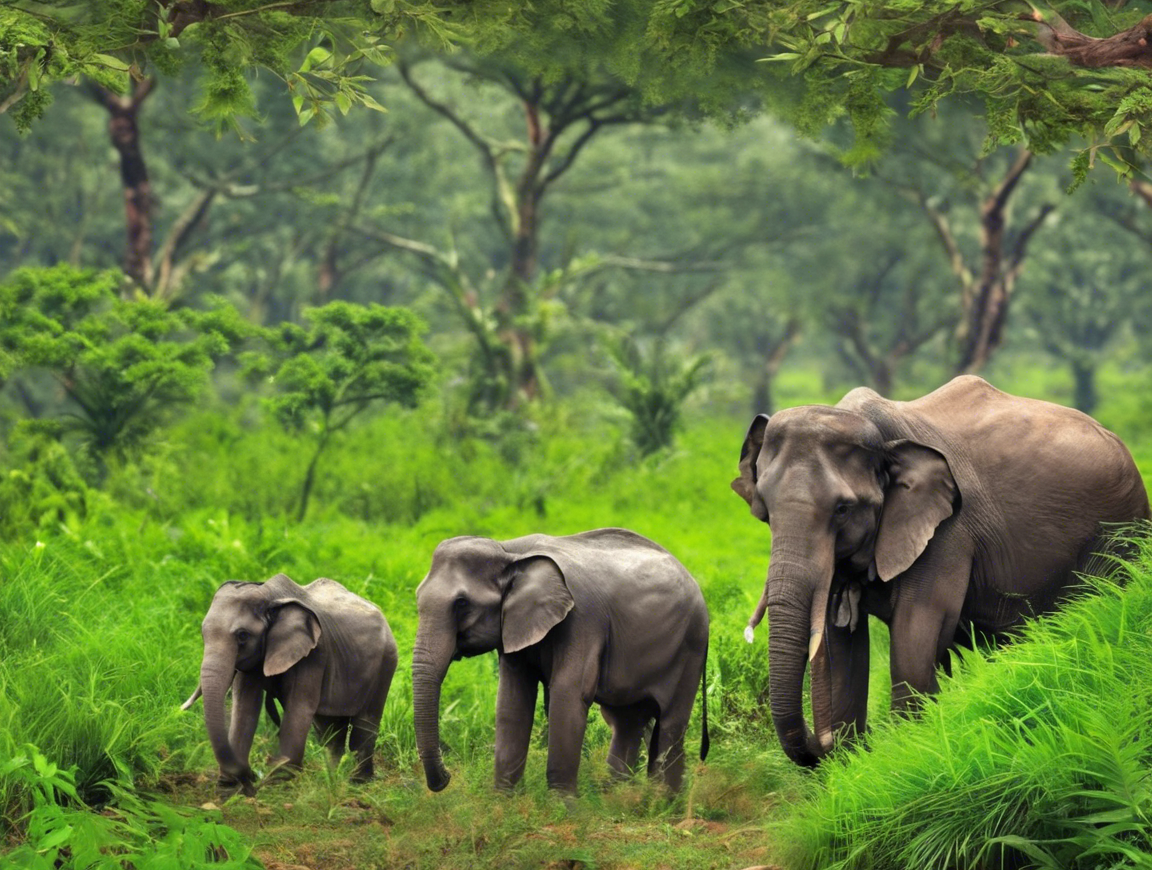Introduction:
India is known for its diverse culture, rich history, and incredible landscapes. However, one of the most underrated aspects of the country is its biodiversity. From the towering Himalayas in the north to the lush forests in the south, India is home to a wide variety of ecosystems and species. In this article, we will explore the biodiversity of India and why it is such a rich place to discover unique ecosystems.
The Western Ghats: A Biodiversity Hotspot:
The Western Ghats is a mountain range that runs parallel to the western coast of India. It is one of the eight hottest hotspots of biological diversity in the world. The region is home to numerous endemic species of plants and animals, many of which are found nowhere else on earth. The lush forests of the Western Ghats are a treasure trove for researchers and nature enthusiasts alike, with opportunities to discover new species and study unique ecosystems.
The Sundarbans: A Unique Mangrove Ecosystem:
The Sundarbans is the largest mangrove forest in the world, located in the delta region of the Ganges, Brahmaputra, and Meghna rivers in India and Bangladesh. This unique ecosystem is home to the famous Bengal tiger, as well as a variety of other wildlife such as crocodiles, snakes, and birds. The Sundarbans is a prime example of the delicate balance between land and sea, and the importance of mangrove ecosystems in protecting coastal areas from erosion and storms.
The Himalayas: A Biodiversity Wonderland:
The Himalayas, the tallest mountain range in the world, are not just a playground for trekkers and climbers – they are also a biodiversity hotspot. The region is home to a wide variety of flora and fauna, adapted to the extreme conditions of high altitudes. Snow leopards, Himalayan monal pheasants, and blue poppies are just a few examples of the unique species that call the Himalayas home. Conservation efforts in the region are crucial to preserving this rich biodiversity for future generations.
The Thar Desert: Surviving in a Harsh Environment:
In stark contrast to the lush forests of the Western Ghats and the snow-capped peaks of the Himalayas, the Thar Desert in western India is a harsh and arid environment. Yet, despite the challenging conditions, the Thar Desert is home to a surprising variety of plant and animal species that have adapted to survive in this unforgiving landscape. From camels to desert foxes, the Thar Desert is a testament to the resilience of life in even the most inhospitable environments.
Conservation Efforts in India:
Despite its incredible biodiversity, India faces numerous challenges in preserving its natural heritage. Deforestation, habitat destruction, poaching, and climate change are all threats to the country’s ecosystems and species. However, there are also many dedicated individuals and organizations working tirelessly to protect and conserve India’s biodiversity. National parks, wildlife sanctuaries, and conservation projects play a vital role in safeguarding the country’s natural treasures for future generations to enjoy.
Conclusion:
India is a land of contrasts, where vibrant cultures and bustling cities coexist with pristine natural landscapes and diverse ecosystems. From the Western Ghats to the Sundarbans, the Himalayas to the Thar Desert, the country’s biodiversity is as rich and varied as its people. By exploring and understanding the unique ecosystems of India, we can appreciate the beauty and complexity of the natural world, and work together to ensure the preservation of this invaluable heritage for generations to come.
FAQs (Frequently Asked Questions):
1. What makes India a biodiversity hotspot?
India’s diverse geography, varied climate, and unique ecosystems contribute to its status as a biodiversity hotspot. The country is home to a wide range of habitats, from mountains to deserts to mangrove forests, which support a rich variety of plant and animal species.
2. How many species are endemic to India?
India is home to over 45,000 plant species and 91,000 animal species, many of which are endemic to the country. This means that they are found only in India and nowhere else in the world.
3. What are some endangered species in India?
Some of the endangered species in India include the Bengal tiger, Indian rhinoceros, Asiatic lion, and Ganges river dolphin. Conservation efforts are underway to protect these species and their habitats.
4. How can individuals contribute to biodiversity conservation in India?
Individuals can contribute to biodiversity conservation in India by supporting sustainable practices, reducing their carbon footprint, volunteering for local conservation projects, and spreading awareness about the importance of protecting the country’s natural heritage.
5. What are some famous national parks in India for wildlife viewing?
Some famous national parks in India for wildlife viewing include Jim Corbett National Park, Ranthambore National Park, Kaziranga National Park, and Periyar National Park. These parks offer opportunities to see a wide variety of plant and animal species in their natural habitats.
6. What role do indigenous communities play in biodiversity conservation in India?
Indigenous communities in India have a deep connection to the land and traditional knowledge of local ecosystems. They play a crucial role in biodiversity conservation through sustainable land use practices, traditional conservation methods, and preserving biodiversity hotspots.
7. How does climate change impact biodiversity in India?
Climate change is a major threat to biodiversity in India, leading to habitat loss, changes in species distribution, and increased frequency of extreme weather events. Conservation efforts are essential to mitigate the impacts of climate change on India’s ecosystems and species.




